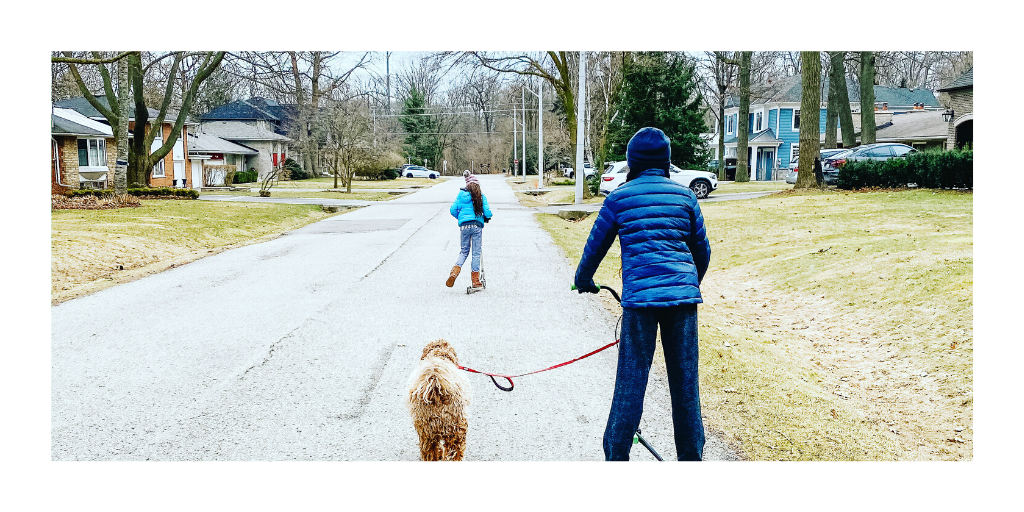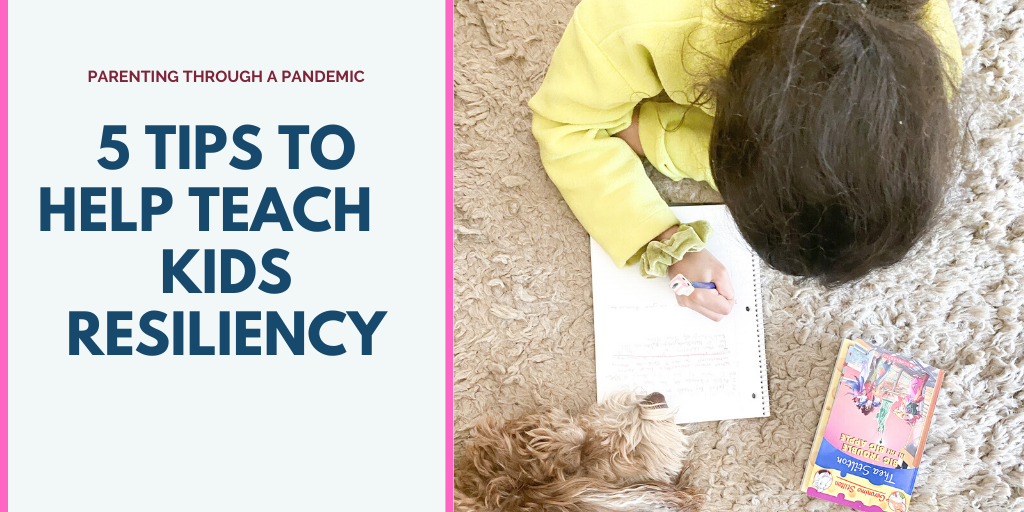By Rajbinder Grewal
Follow Rajbinder on Twitter @mamaneedsavacay
I wake up almost daily to a new alert on google classroom, my fourth grader’s means of communication with her teachers about her schoolwork. Ugh, another three assignments assigned for this week. She still hasn’t completed the work from week 2! Ok, if truth be told the work from week two hasn’t even been started yet. The anxiety for the both of us starts to creep in as I know I worry that my child will fall behind this year. I worry that my children aren’t learning what they are supposed to be learning if they were at school, in their regular classrooms. As a mother of three and a former educator, I personally am finding homeschooling and distance learning to be very challenging.

My attempts with facilitating schooling at home doesn’t look like the dynamic, collaborative learning workspaces that our kids are accustomed to. I often find myself obsessing over my child forgetting her 8 times tables, thinking that her learning needs to look like logging into her virtual classroom for 6 hours a day, trying to stay on top of the copious amounts of worksheets that are assigned. Then I remembered what I had learned early on in teacher’s college: the traditional curriculum doesn’t always have to dictate a child’s learning. I can’t replace my child’s classroom learning, but I can choose to focus on helping my child gain a new skill. This is why I’m shifting my expectations about what my children learn at home to incorporate resiliency.
Why resiliency?
Researchers at Harvard University say that “children who do well in the face of serious hardship typically have a biological resistance to adversity and develop strong relationships with the important adults in their family and community.” When we are faced with something challenging it can be easy to avoid dealing with the situation.
But working through difficult situations forces us to problem solve and address our negative emotions; things that cause us stress or are difficult are easier to ignore than addressing. When we work through them it helps to build confidence and problem-solving skills.
We learn to be flexible, to adapt, to self regulate and to cope. These are skills that children can benefit from learning early on, so that as adults, they are able to be resilient during difficult situations.
5 Tips to help our teach our kids resiliency:
1. Acknowledge our own feelings: As parents, we may be feeling scared and frustrated during a time of uncertainty. By acknowledging our own feelings and stress, we can then acknowledge what our children feel, and encourage them to recognize and understand their own emotions. This time is hard and unknown and it is ok to feel what we are feeling. In fact, any time we find something hard or feel stress, it is ok to feel that way.
2.Flexibility: Let’s try to be more flexible with our children and adjust our expectations to be more realistic about what is actually happening. My child may not be able to work at her best first thing in the morning, or may need many breaks. She may not be able to complete her work according to the assigned deadlines and need many reminders of what 8 multiplied by 9 is, but that is ok. I am working towards being flexible to her needs on a daily basis.
3.Advocate: as parents, we are home with our children, helping them navigate the world of e-learning. This means that we are the ones watching first hand how our kids are adjusting. If they seem overwhelmed or if you find navigating google classroom and the deadlines to be harrowing and stressful, then chances are others do too. Reach out to the teacher, email or call them to let them know what doesn’t work and what does. Explain what learning is looking like in your house, as educators they will understand.
4.Model techniques/behaviour: Model how to deal with stress right now with and for your children. Practice deep breathing throughout your day, teach your child and practice mindfulness together, exercise, stretch, go on family walks.
5.Embrace our mistakes: As parents, we make mistakes everyday, and as we learn to embrace and learn from our own, we can model this and teach it to our children. As they make mistakes and continue to learn and grow, they are learning one of the fundamental parts of resiliency.
So as you sit with your child, and try to refocus their learning, and perhaps feel the stress of not being able to be the most successful homeschooling teacher for your child, remember that learning comes in a variety of ways. It looks different for each of our children, but also most importantly during this time of high stress, the curriculum can take a back seat to their emotional well-being.
©masalamommas and masalamommas.com, 2016-2017. Unauthorized use and/or duplication of this material without express and written permission from this site’s author and/or owner is strictly prohibited. Links may be used, provided that full and clear credit is given to masalamommas.com and Masalamommas online magazine with appropriate and specific direction to the original content.



There are no comments
Add yours